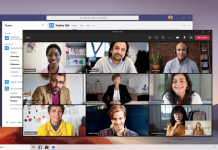
The compatible iPhones may now update to iOS 16 for free. Updated not yet? Following an upgrade, you can start enjoying some of the following new iPhone capabilities.
Widgets and a Lock Screen Gallery
You may now add widgets to your lock screen in iOS 16. After updating, press and hold your lock screen’s wallpaper to access the lock screen gallery. Here, you may save many lock screen layouts and switch between them whenever you want. You can also utilise Focus to link a certain lock screen to a particular Focus mode.
To create a new lock screen, select a wallpaper, then select your widgets by clicking the addition “+” symbol. To alter how the date and time are shown, tap on them. Then, press on the widget space below the clock to add widgets of your choosing. The progress of your Fitness activity ring, the temperature and weather right now, or impending appointments are a few examples.
This widget area is open to use by third-party applications, however they must first be updated. More widgets for usage on your lock screen should start to surface over time.
Make Your Lock Screens Depend on Focus Modes
Set up a another beneficial feature while you’re there, too: lock screens that only appear while you’re in Focus mode. You may choose the right widgets for different focus modes, such as a Calendar widget when you’re at work, and you can attach particular themes and backgrounds to particular activities.
Select a lock screen by tapping and holding your lock screen while the lock screen gallery is displayed, then hit the “Focus” button to choose a Focus mode. Under Settings > Focus, you may increase the number of Focus modes and configure additional automation.
Establish focus filters
You have more control over what is filtered out when a certain Focus Mode is activated thanks to focus filters. Go to Settings > Focus and select a focus mode, then scroll down to Focus Filters and select “Add Filter” to view other possibilities.
When your selected filter is enabled, you may pick which calendars, mailboxes, chats, and tab groups are open. These filters may be used by third-party apps as well, and you can access system filters like Low Power mode and general look below.
Modify and cancel iMessages
Messages that you have sent over the iMessage platform can now be edited and resent. This functions as long as the message bubble is blue, indicating that it has been sent to consumers using Apple devices (including the iPad and Mac). A typical SMS that cannot be changed or resend is one with a green message bubble.
The “Edit” or “Undo Send” buttons may be used by tapping and holding a message bubble. After you send a message, you have up to 15 minutes to amend it. The receiver will receive a notification that the message’s content has changed. For two minutes after sending a message, you can cancel it by adding a note to the bottom of the message window.
Message editing in iMessage is compatible with iOS 15 and earlier, while message unsending is only available with iOS 16.
Get Reminders, Schedule Messages, and Unsend Email
With three really helpful new features, Apple Mail becomes better on iOS 16. The “Undo Send” option, which displays at the bottom of the inbox after sending an email, gives you 10 seconds to retract your message. You’ll be able to make changes and resend the message. Even if there is a 10-second delay as a result of this, the function is still helpful.
Additionally, you may schedule an email by holding down the send button while picking a recommended time or by clicking “Send Later…” and selecting a particular time that works for you.
The email will then reappear in your inbox at the top of the list with a “Remind Me” label next to it if you swipe right on it when it is in your inbox.
Follow Your Medications in Health
You can now add and keep track of any regular drugs you take on your iPhone using the Health app. Tap “Add a Medication” under Health > Medications to begin going. In addition to pills and liquids, this also applies to gels, inhalers, injections, patches, and other products.
You may select the frequency, dose, and time of day for a drug when you add it, and you can also alter the medication’s appearance (shape, colours, etc.) on the app to help you identify it.
After that, you may report these drugs in the Health app, where they will be saved for your records. You will receive notifications when it’s time to take them as long as Health is enabled under Settings > Notifications.
For all iPhone users: A Fitness App
The Fitness app is now accessible to all iPhone users, which is old news if you own an Apple Watch. All users are given a Move ring, which they may fill by using energy, as part of iOS 16. Launch Fitness and choose “Change Goals” from the menu that appears after tapping on your symbol in the top-right corner.
Since you can monitor exercise using the Workout app on the Apple Watch, this is the ideal method to fill your activity rings. You may track your steps on an iPhone by using pedometer functionality as well as applications like Strava and Nike Run Club.
Conversion of currencies in cameras
One of the iPhone’s best-kept secrets is Live Text, which enables you to use your phone’s camera to copy plain text when you aim it at printed words. This function is now available for pricing as well. To use it, simply aim your camera at a currency value, hit the yellow Live Text outline, and then tap the price you wish to convert.
Conversion to your native currency is the default for the context-sensitive functionality. If you live in a country like Australia or Canada and wish to convert US dollars, it’s not the best option because Live Text (fairly) merely thinks the value is in your local currency.
“Now Playing” in Full-Screen Mode While Locked
Apple has once more upgraded the media options on the lock screen to include full-screen album art. Tap the album art in the Now Playing mini-player to view whatever you’re listening to in gorgeous full-screen.
To access your standard lock screen, including widgets and alerts, tap the album image once again to minimise the player.
Touchscreen Keyboard Feedback
You can now add haptic feedback for each key hit while typing, which is a simple but worthwhile modification to make if you value a more tactile typing experience. Select “Haptic” from the toggle menu under Settings > Sound & Haptics > Keyboard Feedback.
Even if your iPhone is not muted, you may completely turn off the “click” typing sound using this option.
Menu bar’s battery percentage
Do you miss always having the battery level shown on your menu bar? Positive news As long as you have a device that is compatible, you may re-enable it with iOS 16. In its stead, a numerical readout that turns green while you’re charging and red when you’re running short takes the place of the battery fullness indication.
This may be activated by going to Settings > Battery > Battery Percentage. This function is not accessible on all iPhones running iOS 16. The iPhone XR, 11, 12, and 13 mini won’t be able to accomplish this since there isn’t enough room between the notch and the screen’s edge on those devices.
Safari’s pinned tabs
To keep a tab pinned, tap and hold the URL bar in Safari and select “Pin Tab,” exactly as you can on Safari for Mac. Pinned tabs are shown at the top of the tab group and cannot be closed until they are unpinned.
Portrait Face ID
Users have been requesting a patch for iOS 16 ever since Face ID was originally released. Now that Face ID is supported in landscape mode, just make sure your smartphone is placed enough enough from your face to receive an accurate scan.
It should “simply work” once iOS 16 has been installed, thus there is nothing you need to do to make this possible. This is useful for anyone who uses an iPhone controller mount to play video games.
Discover and remove duplicate photos
With the Photos app and iOS 16, you may remove duplicate images and screenshots. Navigate to the “Albums” tab, scroll to the Utilities section at the bottom of the list, and choose the “Duplicates” album. There will be a list of images that have been identified as duplicates.
Move the remaining files to the “Recently Deleted” folder after selecting “Merge” to save the best version (where it will be deleted after 30 days). There’s a good chance you don’t have any duplicates if you don’t see this album. It may be worthwhile to wait a few hours or days for Photos to finish processing and check back if you don’t initially see this album because we discovered that it didn’t appear right away after upgrading.
Search for and Remove Duplicate Contacts
The finding of duplicate contacts feature in iOS 16 is also useful. Open the Phone application and select Contacts (or open the Contacts app directly). If there are any duplicate contacts, a warning will appear at the top of the screen.
Review the data by selecting “View Duplicates,” then selecting “Merge” on each.
Lift Photographic Subjects
Lifting the subjects directly out of your images is a useful new feature in iOS 16. Use it by tapping and holding on a topic and dragging them out of the picture. When you release, a “Copy” and “Share” link will appear, allowing you to copy the subject and paste it elsewhere or share it straight with another app.
Using it with Live Photos, which also employ the long press motion, is a little tricky. Try it out for yourself to see how it works; there is a little delay between the time the subject becomes draggable and the Live Photo begins to play.














































